
2020
Annual Report
1. Letter
Dear Friends,
2020 was a challenging year. Teachers and students had to adapt quickly to remote and hybrid instructional settings (with materials that may not be designed for it), and families faced the impossible demands of balancing jobs and supporting kids amid the very real threat of a devastating disease and looming economic consequences.
On top of all this, the country witnessed the senseless death of George Floyd, and began to reckon with the searing impact of systemic racism in our educational system and country. Before the upheaval of 2020, EdReports had already initiated a three-year plan to embed diversity, belonging, inclusion, and equity in all we do. In 2020, our commitment to equity took on an increased urgency and importance. We know our efforts have only just begun, but we are energized by and dedicated to the work that lies ahead.
While saddened and angry by the onslaught of difficult news, we found inspiration and motivation by witnessing the thousands of educators who rose to meet these unprecedented challenges. We are grateful for and humbled by the efforts of teachers, families, principals, instructional coaches, and district leadership that have helped students continue to learn, grow, and process the changing world around them.
Throughout the year, EdReports focused on providing timely, actionable resources to educators. We continued our work supporting strong materials selection practices by adapting trainings and workshops to take place remotely. We published a catalog of enhanced reports with technology information to support local communities to adapt existing programs or adopt new ones that could work in diverse settings. And we published more than 160 new reports of math, ELA, and science materials to ensure educators have the information necessary to select high-quality curricula.
Looking forward, we are excited to begin reviewing interim assessments in 2021. Researchers are already demonstrating the extent to which students, particularly the most vulnerable, have experienced learning loss as a result of the pandemic. Assessments will be a key tool to diagnose unfinished learning, COVID-19 related or otherwise, to help use materials while individualizing instruction to address gaps before they get worse.
We extend our gratitude to all those who made this work possible, especially in a year that was so difficult for everyone. Thank you to our more than 600 educator reviewers and the millions of people who have explored our reviews to make informed choices about instructional materials. Working together, we know that students across the country are benefiting from the high-quality content that can make a difference in their lives now and in the future.
Eric Hirsch
Executive Director
Impact Data
Number of Instructional Materials Reviews Published
164 IN 2020
799 ALL TIME AS OF 12.31.20
84 IN ELA
62 IN MATH
18 IN SCIENCE
* Reports reflect grade-level reviews.
Documented Districts Using Edreports
1,084 Districts
REPRESENTING
12.4M Students

District Highlight: Watchung Hills, New Jersey

Watchung Hills Regional High School
The COVID-19 pandemic impacted districts in a variety of ways, particularly as schools had to make the transition to remote and hybrid learning without the support of high-quality instructional materials.
Watchung Hills Regional High School remained committed to selecting a new, aligned mathematics program even with the challenges educators were facing.
EdReports partnered with the small one-school district for a series of virtual sessions to provide guidance on best practices for selecting new curriculum. The district’s commitment to ensuring all students have access to the content needed for success highlights the importance and possibilities of adapting existing adoption processes to remote settings.
Largest 200 Districts Documented Using EdReports
84 Districts
OF THE LARGEST
200 Districts

District Highlight: Palm Beach County

Photo courtesy of the Palm Beach County School District
We are failing our students if we don’t address the real inequities in our system. The materials we’re putting in front of kids matter. It matters that all of our students, no matter their background, have access to culturally relevant materials and see themselves in the content we provide. While we know there is still work to do, we feel incredibly fortunate to be able to push on publishers to change practices so that we have better choices of curriculum for all students.”
Diana Fedderman
Assistant Superintendent of
Teaching and Learning
Palm Beach County School District is the 10th largest district in the United States. The district is currently adopting K-12 English language arts materials with a strong emphasis on standards alignment and cultural relevance. With a large and diverse student population, district leaders wanted to ensure that the materials chosen would represent and engage all students.
Because of the district’s size, Palm Beach County has a significant opportunity to influence adaptations to the instructional materials publishers develop for their procurement. To ensure that the district would select products that met college and career-ready standards, Palm Beach County required that all potential programs had to first meet expectations for alignment on EdReports.
To meet district goals around cultural relevance, leadership worked with community stakeholders, including the Coalition for Black Student Achievement and the Hispanic Education Coalition, to create a review rubric focused on text variety, language variety (especially Spanish for dual-language schools), and variety in representation. Palm Beach cares about students having access to stories with authors and themes that are not only diverse but that mirror their students’ own experiences. The rubric was shared with publishers to highlight the specific qualities Palm Beach was looking for in the K-12 materials they would ultimately select. Educators then utilized EdReports reviews and their own analyses of standards alignment and cultural responsiveness to select a program that best met all of the district’s required criteria.
Palm Beach County is an example of a large district leveraging its size and influence to not only demand standards-aligned curriculum but to use the power of instructional materials to increase equity and inclusion for all students.
School Leaders Who Have Heard of EdReports
46%
The RAND American School Leader Panel surveys a nationally representative sample of more than 2,000 school leaders annually. The ASLP is designed to help decision makers understand current challenges which in turn can inform future policy decisions.
Of the 46% of school leaders 32% indicated they used EdReports to identify, select, or implement instructional materials.
School Leaders Who Have Heard of EdReports:
Growth Over Time
13% IN 2017
22% IN 2018
40% IN 2019
46% IN 2020
Growth 2017–2020
Of those who’ve heard of EdReports, the growth in those who have indicated they used EdReports to identify, select, or implement instructional materials:
17% IN 2017
35% IN 2018
31% IN 2019
32% IN 2020
Collaborations with State Departments of Education in 2020
State Highlight: Rhode Island
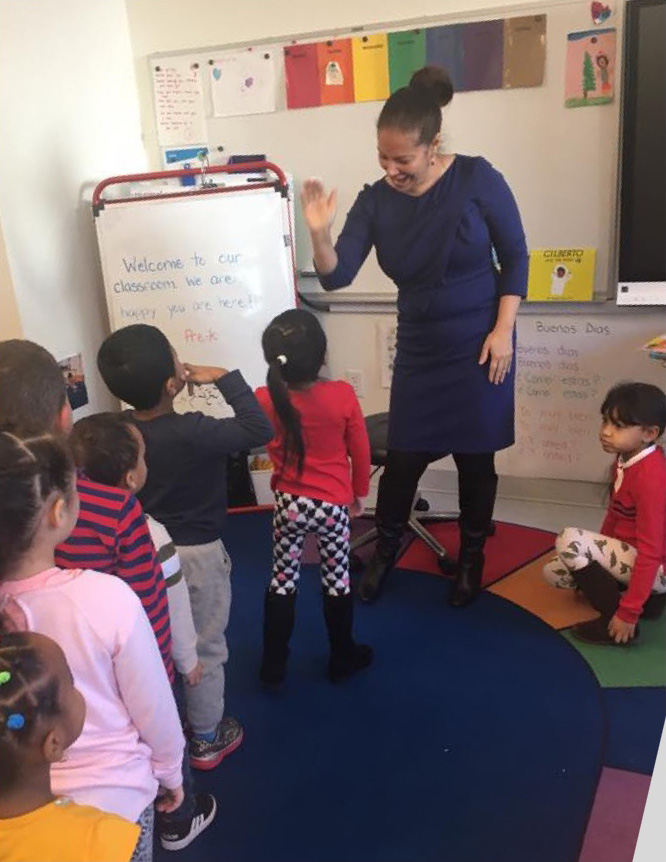
Photo courtesy of the Rhode Island Department of Education
We hoped to use this as an opportunity for districts to learn a different and better way to go about adopting instructional materials. If we only pointed them to a website on their own, we didn’t think there would be a lasting, widespread impact. We wanted to support educators as they learned a new skill set, explored a new way to go about looking at materials, engaged stakeholders, and ultimately decided what was best.”
Lisa Foehr
Chief of Teaching and Learning,
Rhode Island Department of Education
Since 2018, EdReports has partnered with the Rhode Island Department of Education (RIDE) to empower district teams made up of teachers, principals, coaches, and leadership with best practices in selecting high-quality, aligned instructional materials.
Over the past two and a half years, RIDE and EdReports have offered a series of formal trainings, each training consisting of six daylong sessions. The sessions provide tools and resources that help districts invest in a comprehensive materials adoption process focused on alignment, equity, and local needs. In addition, educators who participate are able to bring their learnings back to share with their communities.
In 2019, the Rhode Island state legislature passed a bill that focused directly on access to high-quality instructional materials, reflecting the yearslong efforts of the Rhode Island Department of Education and districts across the state. What began as volunteer endeavors of committed educators is now state law. The legislation also codifies much of the philosophy and content that the cohort trainings championed.
In the fall of 2020, EdReports was scheduled to train hundreds of educators working in district teams over the course of several months in person. All workshops were modified so that districts could participate safely online. Despite the strains on capacity brought on by transitions to remote and hybrid learning, 15 districts signed up to participate in the virtual trainings.
To date, almost every regional district in the state has participated in at least one training resulting in the adoption of aligned instructional materials. Rhode Island exemplifies the guidance, resources, and support states can provide while ensuring local districts have the autonomy to make their own decisions about curriculum.
State Highlight: Mississippi

Photo courtesy of the Mississippi Department of Education
Through our High-Quality Instructional Materials (HQIM) Strategic Plan, we are committed to ensuring EVERY student reads meaningful complex texts and expresses ideas effectively through writing and speaking to build knowledge of the world. In addition, we are committed to ensuring all Mississippi educators are equipped with knowledge, skills, and tools to advocate the need for HQIM for all students.”
Kristen Wynn
State Literacy Director (K-12),
Mississippi Department of Education
Mississippi continues to raise the bar for high-quality English language arts instructional materials. Throughout 2020, the state partnered with EdReports to develop English language arts criteria to review instructional materials and to train educators to conduct reviews of ELA programs as part of its state adoption.
The criteria the state developed prioritize standards alignment similar to EdReports review tools and emphasizes cultural relevance. Mississippi will publish its adoption list based on its criteria to provide districts with guidance on available quality English language arts materials to consider.
EdReports.org Total Visitors

In 2020, more than 700,000 unique visitors accessed 2,100,000 web pages of reports, blogs, and research about instructional materials. Since the launch of EdReports in 2015, the website has been visited 7,500,000 times.

Number of Comprehensive Instructional Materials that Have Been Improved by Publishers in 2020
Supporting the Field through COVID-19
The COVID-19 pandemic upended schools and classrooms across the country. Every district had to adapt in order to reach all students, provide safe learning spaces, and continue supports such as food services. Finding new ways to select and use instructional materials throughout the year was no exception.
Given the transition to remote and hybrid learning, instructional materials were integral to supporting teachers and students to prevent learning loss and to continue new learning. Districts without high-quality, aligned materials felt the impact of school closures acutely. Sara Monaco, assistant superintendent in Smithfield, Rhode Island, recalled how difficult the transition was: “We had no common platform for materials and we didn’t have enough in-house materials to use with all of our students.” Districts that adopted new materials before the pandemic also had to figure out how to implement a new program while simultaneously adjusting to COVID-19 changes.
At EdReports, the pandemic affected our organization and choices in multiple ways. We created a wealth of COVID-19 specific resources as well as an entire catalog of new reports that focus on technology information. And we adapted our field services program to provide virtual trainings.
We are still unpacking the impact and influence of COVID-19 on K-12 education and the instructional materials market. What’s clear is that despite these very real challenges, educators remain committed to ensuring all students have access to the high-quality materials they need now more than ever.
Enhanced Reports with Technology Information

Our district had adopted high-quality, standards-aligned ELA and math curriculums. We were able to use EdReports’ enhanced reports to help drive conversations with these publishers to create specific digital resources that we needed during remote instruction. Using these reports resulted in a closer partnership between our technology department and the content experts.”
Jana Bryant
Math Instructional Coach
Daviess County Public Schools
Since EdReports released its first reviews five years ago, the materials landscape has changed dramatically, especially in the area of technology. District questions have evolved from ensuring materials could be accessed on older browsers and versions of operating systems to detailed questions about interoperability, compatibility, security, support, and digital design.
These questions became even more important during the COVID-19 pandemic as districts assessed what instructional materials worked best in their communities, not just in person but also remotely and in hybrid settings.
As part of EdReports’ response to COVID-19, and in order to better support districts with relevant information, we reached out to publishers, requesting technology information for standards-aligned materials. With this new information, our team put together a catalog of enhanced reports designed to help consumers better understand the digital design and capabilities of their instructional materials. The aim was to support local communities to adapt existing programs or adopt new ones to ensure students continued to learn no matter the setting.
Beyond the Zoom Boxes: EdReports Hosts Its First Virtual Summer Training

We learned that virtual tools could be used to amplify a variety of voices and create spaces where everyone could participate. We also saw that while community building might look different in an online format, we were able to create new connections and support reviewers to go beyond traditional social bonds.”
Courtney Allison
EdReports Chief Academic Officer



Every year, EdReports hosts more than 150 educator reviewers for an in-person, multiday training on our review process and tools. This was not the case in 2020. Instead, we were able to welcome 250-plus reviewers virtually in what became our largest training to date.
Even with the challenges of the COVID-19 pandemic, we weren’t in a position where we could simply scrap our plans. Without a successful training, we would be unable to continue creating the reviews that are the heart of our organization and mission. Instead, we realized we had to invent a completely new approach—moving the entire training online. What started out as a series of obstacles ended with unforeseen opportunities and learnings.
Virtual professional learning will likely be a reality for many organizations and schools for the foreseeable future. It’s more important than ever that we’re able to learn from each other. Read more about the steps we took to create an engaging virtual conference that elevated equity, accessibility, and community-building for all attendees.
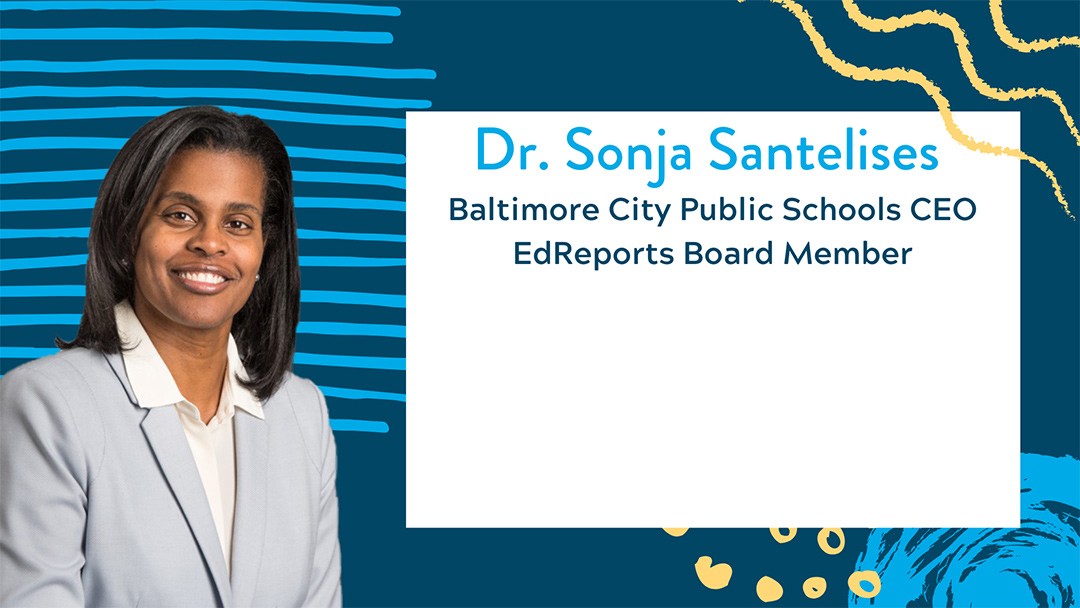
Dr. Sonja Santelises, Baltimore City Public Schools CEO and EdReports Board of Directors Member, opened EdReports’ 2020 Reviewer Summer Training by sharing her thoughts on the critical role of curriculum to support students, teachers, and families through the COVID-19 crisis.
Curriculum Adoption Didn’t Stop–Neither Did We
Districts did not stop selecting or implementing instructional materials just because they faced the challenges of the COVID-19 pandemic. In fact, aligned, high-quality content proved more important than ever as teachers searched for supports in the transition to remote and hybrid learning.
At EdReports, we continued to partner with states and districts to offer training and tools for educators adopting new K-12 programs. But we had to adjust as well. First, we created specific resources about selecting materials during the pandemic and what districts should consider given the changing conditions.
In addition, just as we adapted our training for educator reviewers, we redesigned our sessions with districts to ensure our services could be effective remotely. In states such as New Mexico, New Jersey, Mississippi, and Rhode Island, we worked with groups both small and large to support smart selection practices.
We’ll be the first to say that having to quickly transition our in-person work to an online format wasn’t easy. Sometimes we stumbled. Quite often, we had to adjust in real time. However, what mattered most is that educators continued to have seamless access to high-quality independent information to make the best choices for their communities.
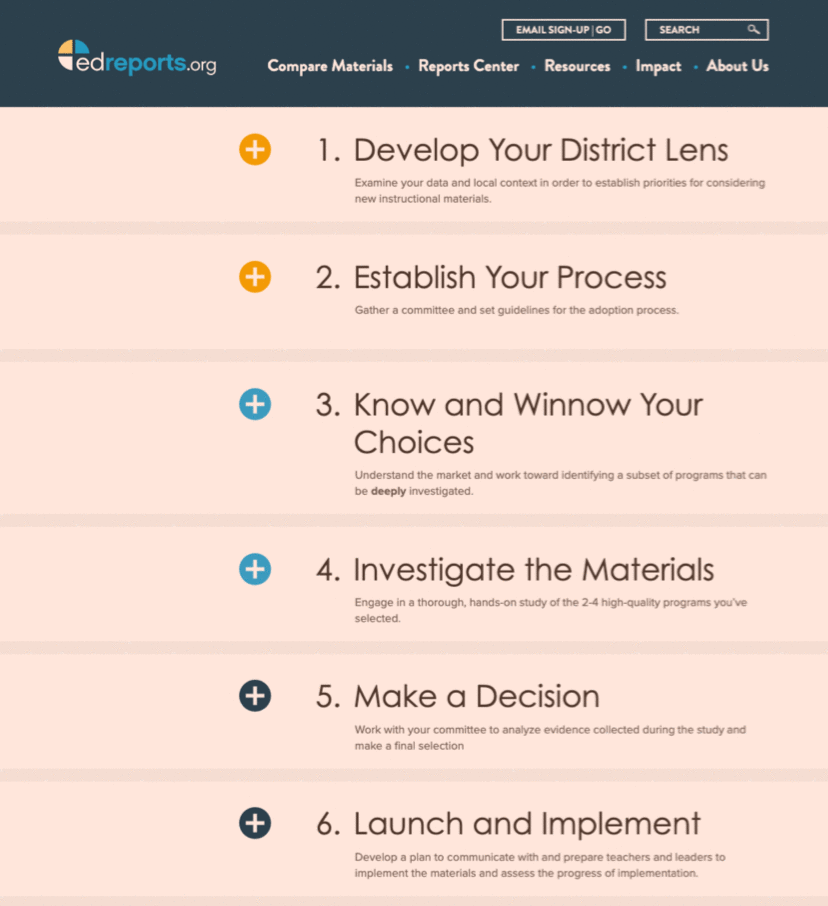
EdReports’ Guide, Selecting for Quality: 6 Key Adoption Steps
Reviewer Data
Number of Reviewers
691 reviewers
ALL TIME FROM
48 states including DC
691 reviewers
all time from
48 states
including DC
Reviewers’ Average Years in Education
Estimated Educator Hours Spent Conducting Reviews in 2020
Reviewers’ Total Years Experience in Education
Reviewers’ Average Years in Education
Years
Estimated Educator Hours Spent Conducting Reviews in 2020
Hours
Reviewers’ Total Years Experience in Education
Years

Photo courtesy of Baltimore City Public Schools
At this place in time with all the challenges in education, curriculum is the lever to make sure we’re addressing equity. It’s about equitable access to high-level learning”
Dr. Sonja Santelises
Baltimore City Public Schools CEO and EdReports Board of Directors Member
State of the Market
Of the English language arts materials EdReports has reviewed:
16% DOES NOT MEET EXPECTATIONS
32% PARTIALLY MEETS EXPECTATIONS
52% MEETS EXPECTATIONS
Of the math materials EdReports has reviewed:
32% DOES NOT MEET EXPECTATIONS
27% PARTIALLY MEETS EXPECTATIONS
41% MEETS EXPECTATIONS
The Use of Standards-Aligned Materials in 2020
ELA MATERIALS
MATH MATERIALS
While 52% of ELA materials meet expectations for alignment ...
... only 26% of ELA materials used by teachers in classrooms are aligned
More in line with availability 41% of math materials meet expectations for alignment ...
... and 40% of math materials used by teachers in classrooms are aligned
Weekly use of standards-aligned materials went up from 2019 to 2020—11 percentage points in ELA and 10 percentage points in math
And, weekly use of materials created by teachers went down—5% in ELA and 4% in math
2021 and Beyond
2020 was a year of unprecedented challenges, but through these difficult times EdReports’ mission of ensuring all students have access to aligned, high-quality instructional materials to prepare them for college and career has never been more important. But we know how much work there is still to do—particularly with what schools have been through and continue to withstand.
Updating Our Review Criteria
In the fall of 2020, we started reviewing instructional materials with updated, revised review tools with a focus on more fine-grained supports for English learners, learner variance, and culturally relevant education. Instructional materials play a critical role in addressing issues of equity, and we hope our reviews support districts to select materials that speak to the needs and experiences of all students.
Breaking Ground on New Interim Assessment Reviews
In 2021, we will dive into new areas of review, including interim assessments. While high-quality instructional materials are key to accelerating student learning, we know materials alone cannot get the job done. To achieve mastery of the standards and close gaps, teachers need the right assessments to inform their instruction.
Researchers predict that students will have suffered tremendous learning loss as a result of the pandemic. Assessments will be a key tool to diagnose unfinished learning, COVID-19 related or otherwise, and to help individualize instruction in order to address gaps before they get worse. We hope these new reviews will empower educators with data to ensure the programs they are using offer teachers every possible support in determining how to reach all students.
Transforming EdReports.org
As the need for credible independent information about instructional materials grow, it’s vital that our diverse resources are accessible, user-centric, and increasingly sophisticated. Beginning in fall 2021, EdReports’ website will feature an improved experience, more services, and new ways of sharing educator stories and resources to support the field.
OrganizationalOrg Health
A Commitment to Lead with Equity
The weight of discrimination in America pervades every aspect of our lives: education, housing, voting, employment, and health. At EdReports, we know that we cannot fulfill our mission to improve outcomes for all students if we do not recognize this truth and take urgent, meaningful action to fight the status quo.
As an organization, EdReports is still early in its journey toward equity. We have experienced growing pains like many other groups. Part of our growth is recognizing and deeply interrogating the impact of implicit bias on our work. Since 2019, we have been undergoing diversity, belonging, inclusion, and equity (DBIE) training, but the urgency to make meaningful changes became more urgent after the killing of George Floyd and the resulting protests that emerged across the country.
To date, EdReports has partnered with external DBIE experts, hosted multiple all-staff trainings in 2020, formed an internal DBIE committee, and gathered data around the reviewer experience centered on the realities of our reviewers of color. What we heard and saw in the data was stark, but not surprising. We need more diversity among our reviewers, we need more leadership opportunities for reviewers of color, and we must create a more inclusive community and build a sense of belonging across our teams.
We acknowledge how much more we have to do to build a truly equitable EdReports community. We are committed to stand against racism but know that it will take work and accountability. Ultimately, there is no way to achieve our mission unless we lead with equity.
Financials
The financial information summarized in this annual report is from the unaudited 2020 EdReports Financial Statements.
Complete financial statements will be included in our audited financials. Audit to be conducted by Frank, Rimerman + Co. LLC, Certified Public Accountants.
Percentages are rounded to the nearest whole percent.
Statement of Financial Position
| ASSETS | |
| Current Assets | $4,843,360 |
| Non-Current Assets | $1,462,269 |
| Total Assets | $6,305,630 |
| LIABILITIES & NET ASSETS | |
| Total Current Liabilities | $195,798 |
| NET ASSETS | |
| Without Donor Restrictions | $3,265,568 |
| Board Designated Cash Reserve | $1,462,269 |
| With Donor Restrictions | $1,381,993 |
| Total Net Assets | $6,109,831 |
| Total Liabilities & Net Assets | $6,305,630 |
Statement of Activities
| REVENUES | |
| Unrestricted Contributions | $2,076,740 |
| Unrestricted Other Revenue | $322,122 |
| Restricted Contributions | $1,305,598 |
| Total Revenues | $3,704,460 |
| EXPENSES | |
| Building Organizational Capacity | $595,434 |
| Identifying Excellence | $2,657,799 |
| Increasing Demand for Excellence | $2,133,647 |
| Total Program Services | $5,386,880 |
| Management & General | $658,071 |
| Fundraising | $149,729 |
| Total Support Services | $807,800 |
| Total Expenses | $6,194,680 |
| CHANGES IN NET ASSETS WITH DONOR RESTRICTIONS | |
| Restricted Contributions | $1,305,598 |
| Net Assets Released from Restriction | $(3,172,782) |
| Change in Net Assets with Donor Restrictions | $(1,867,185) |
| CHANGE IN NET ASSETS | |
| Net Assets at Beginning of Year | $8,600,052 |
| Net Assets at End of Year | $6,109,831 |
| Change in Net Assets | $(2,490,220) |
9. Funders



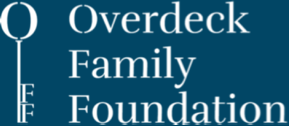
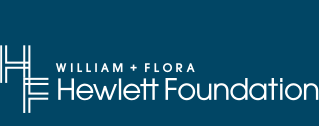
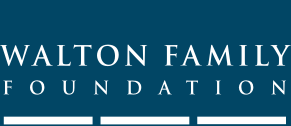
We remain grateful to all of the foundations that have supported EdReports over the years:
Bill & Melinda Gates Foundation
Broadcom Corporation
Carnegie Corporation of New York
The Charles and Helen Schwab Foundation
The Charles and Lynn Schusterman Family Philanthropies
The Helmsley Charitable Trust
Oak Foundation
Overdeck Family Foundation
The Samueli Foundation
The Stuart Foundation
The William and Flora Hewlett Foundation
10. Board of Directors

Sara Allen
Director of Early Learning and Pathways,
Bill & Melinda Gates Foundation

Darren Burris
Math Teacher,
YSC Academy

Kisha Davis-Caldwell
Senior Policy & Program Specialist,
Analyst for the Leadership Development Team,
National Education Association

Michael Hyde
Board Treasurer,
Former Managing Director,
Accenture Finance

Dr. Maria Klawe
Board Chair,
President, Harvey Mudd College

Kathleen McGee
Counsel,
Lowenstein Sandler

Audra McPhillips
Mathematics Specialist and Coach,
West Warwick Public School

Dana Nerenberg
Principal,
Sitton Elementary School

K. Sue Redman
Audit Committee Chair,
President of Redman Advisors LLC and Executive Professor in the Mays
Business School Accounting Department at Texas A&M University

Dr. Sonja Santelises
Board Vice Chair,
Chief Executive Officer of Baltimore City Public Schools

Liz Simon
General Counsel and Vice President of External Affairs, General Assembly

Lauren Stuart
English Language Arts Teacher,
El Rodeo School

Peter Tang
Board Secretary,
SCORE Senior,
Policy and Research Analyst
